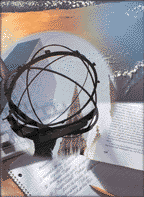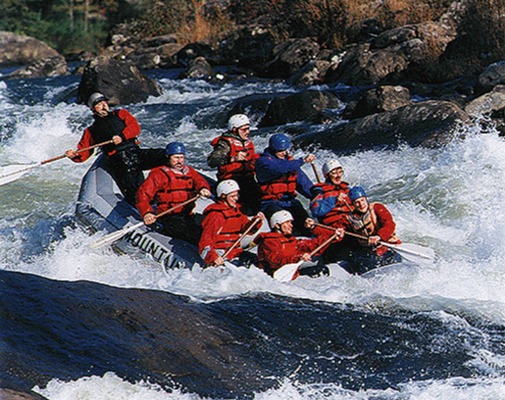
"It was a private entrepreneur, under contract to the Spanish monarchs, who sailed to
the New World in 1492." - Emanuel S. Savas
Welcome to the Alternative Service Delivery Systems Project Homepage!!!
We are composed of a highly
motivated group of graduate students at
the H. John Heinz III School of Public Policy and Management,
Carnegie Mellon Univeristy.
What is "Systems Synthesis Project"?
 Systems synthesis project is an important aspect of the MS and
MAM education experience in the
Heinz school. It allows students to apply the diverse skills developed in the classroom to a
"real world" problem with a "real world client" in the design of a specific functioning public sector system. The term "system" refers to the fact that the particular entity studied has
an identifiable objective or function, and the word "synthesis" refers to the fact that the desired ourput is an integrated "design" for improved operation of that system. In this capstone, a year-long project course, 10-12 students and faculty advisors address a public interest problem of local or national importance. Students develop an interdisciplinary approach to understanding the problem and structuring systematic solutions. This effort are both guided and challenged by advisory boards of professionals in the field. Often, members of these advisory boards represent organizations with well-defined stakes in the outcome of the project. This interaction provides real experience with the forced that determine the outcome of careful policy analysis and problem management.
Systems synthesis project is an important aspect of the MS and
MAM education experience in the
Heinz school. It allows students to apply the diverse skills developed in the classroom to a
"real world" problem with a "real world client" in the design of a specific functioning public sector system. The term "system" refers to the fact that the particular entity studied has
an identifiable objective or function, and the word "synthesis" refers to the fact that the desired ourput is an integrated "design" for improved operation of that system. In this capstone, a year-long project course, 10-12 students and faculty advisors address a public interest problem of local or national importance. Students develop an interdisciplinary approach to understanding the problem and structuring systematic solutions. This effort are both guided and challenged by advisory boards of professionals in the field. Often, members of these advisory boards represent organizations with well-defined stakes in the outcome of the project. This interaction provides real experience with the forced that determine the outcome of careful policy analysis and problem management.
The Origin of the Project

The idea for the ASD systems project was developed by co-manager Will Morrow in April 1996 as one of several systems project ideas. He found it intriguing due to its timeliness in Allegheny County economic and political events, the large scope of the topic, the availability of literature on the topic, and the availability of data through the Allegheny County Budget & Finance Division as a client. Faculty advisor Pat Larkey endorsed the project idea as the most appropriate of the ones being considered. Will approached co-manager Cathy Senderling to develop a formal proposal for the project, and they began to approach student group members. Group members were recruited for their academic ability, their history of working well in group environments, their diverse career specialties, and their diverse personalities, interests, and characteristics. Other members were added to the project based on their own interest in the topic. With 15 initial members, the project was one of the most popular systems projects in Heinz.
The First Phase of the Project
 When we began our project, we were certain only that we wanted
to look at the ways in which the Allegheny County government delivers its services. To this end,
we considered each of the departments in the county, and the services that they provide to the
county residents. Our goal was to narrow the list of relevant county departments from the full list of thirty-nine, to a more manageable 3-5, into which we would look further.
So for the initial eight weeks, we collected data on the services
provided by Allegheny County Government. In analyzing this data we have
identified four county services that might be candidates for some
level of alternative service delivery. Ongoing contact with the county
budget analysts was a major task in addition to conducting literature review. Introductory presentation was given on October 16, 1996, to review the problem definition and plan of action with the advisory board.
When we began our project, we were certain only that we wanted
to look at the ways in which the Allegheny County government delivers its services. To this end,
we considered each of the departments in the county, and the services that they provide to the
county residents. Our goal was to narrow the list of relevant county departments from the full list of thirty-nine, to a more manageable 3-5, into which we would look further.
So for the initial eight weeks, we collected data on the services
provided by Allegheny County Government. In analyzing this data we have
identified four county services that might be candidates for some
level of alternative service delivery. Ongoing contact with the county
budget analysts was a major task in addition to conducting literature review. Introductory presentation was given on October 16, 1996, to review the problem definition and plan of action with the advisory board.
The Second Phase of the Project

Our next step was to examine the service
delivery options for these services and present our preliminary findings to the County Budget Office.
We broke into three subgroups (Parks and Recreation, Health Department, Jail) to examine
the service delivery options for the identified services, and each subgroup conducted specific
literature review, site visits and interviews,
and kept contacting the budget officers in the County Bugdet Office.
These endeavor took some of us to Delaware county, PA, Indiannapolis, IN,
Baton Rouge, LA. In examining a variety of options for each service delivery, an important task was indentifying
performace measures to compare the services delivered by each option,
and consequently to ensure the quality of services.
Four crucial criteria for the alternative service delivery decision (Efficiency, Effectiveness, Equity, Feasibility)
also have been identified. Intermediate presenation was given on January 29, 1997 to bring the advisory board up to date on the progress of the project and review the plan for the completing the project.
The Third Phase of the Project

The final aspect of the project was two fold. Since "contract-out" was a
dominant alternative service delivery option, a sub-group was created
and dedicated to the investigation of detailed procedure of the option.
Systems synthesis projects involve both oral and written work, so
major part of the final phase was devoted to writing the final document in a collective manner. A subgroup formed structure for document input and disseminate information on document form. Each section had an editor, most team members were responsible to write a significant and identifiable section of the report, and they reviewed a couple of sections in which they did not write. Critical and valuable comments were also provided by two faculty advisors, Patrick Larkey and Erik Devereux, and some members of advirosry board. Final presenation was given on April 21, 1997 to present the result of our work to the advisory board as well as to the client. It was open to the entire Heinz school community and any interested parties. Press conference was followed.
The Whitewater Rafting

Sometime in the last phase of the project, some of us got the idea of going white water rafting after the project and finals. Andrew checked on two rivers, the upper Youghiogheny and the upper Gauley in West Virginia. The upper Yough is a bit closer and bit more expensive, but it was favored by most of the team. Monday, May 12 was indetified as the most favorable date. The upper Youghiogheny river was at Ohiopile, PA and about 3 hours from Pittsburgh. It has big rapids, class V on a scale of I-V with V being the highest, most exciting. Although the cost was $115 + tax (total $121), it included lunch and we ended up getting a discount since we invited some more fellow Heinz people to hit the number of minimum, 15, for group discount and we claimed tax exempt status as an organization. No doubt, we had a fantastic time there and blasted every piece of stress we complied.

 Systems synthesis project is an important aspect of the
Systems synthesis project is an important aspect of the 
 When we began our project, we were certain only that we wanted
to look at the ways in which the Allegheny County government delivers its services. To this end,
we considered each of the departments in the county, and the services that they provide to the
county residents. Our goal was to narrow the list of relevant county departments from the full list of thirty-nine, to a more manageable 3-5, into which we would look further.
So for the initial eight weeks, we collected data on the services
provided by Allegheny County Government. In analyzing this data we have
identified four county services that might be candidates for some
level of alternative service delivery. Ongoing contact with the county
budget analysts was a major task in addition to conducting literature review. Introductory presentation was given on October 16, 1996, to review the problem definition and plan of action with the advisory board.
When we began our project, we were certain only that we wanted
to look at the ways in which the Allegheny County government delivers its services. To this end,
we considered each of the departments in the county, and the services that they provide to the
county residents. Our goal was to narrow the list of relevant county departments from the full list of thirty-nine, to a more manageable 3-5, into which we would look further.
So for the initial eight weeks, we collected data on the services
provided by Allegheny County Government. In analyzing this data we have
identified four county services that might be candidates for some
level of alternative service delivery. Ongoing contact with the county
budget analysts was a major task in addition to conducting literature review. Introductory presentation was given on October 16, 1996, to review the problem definition and plan of action with the advisory board.


